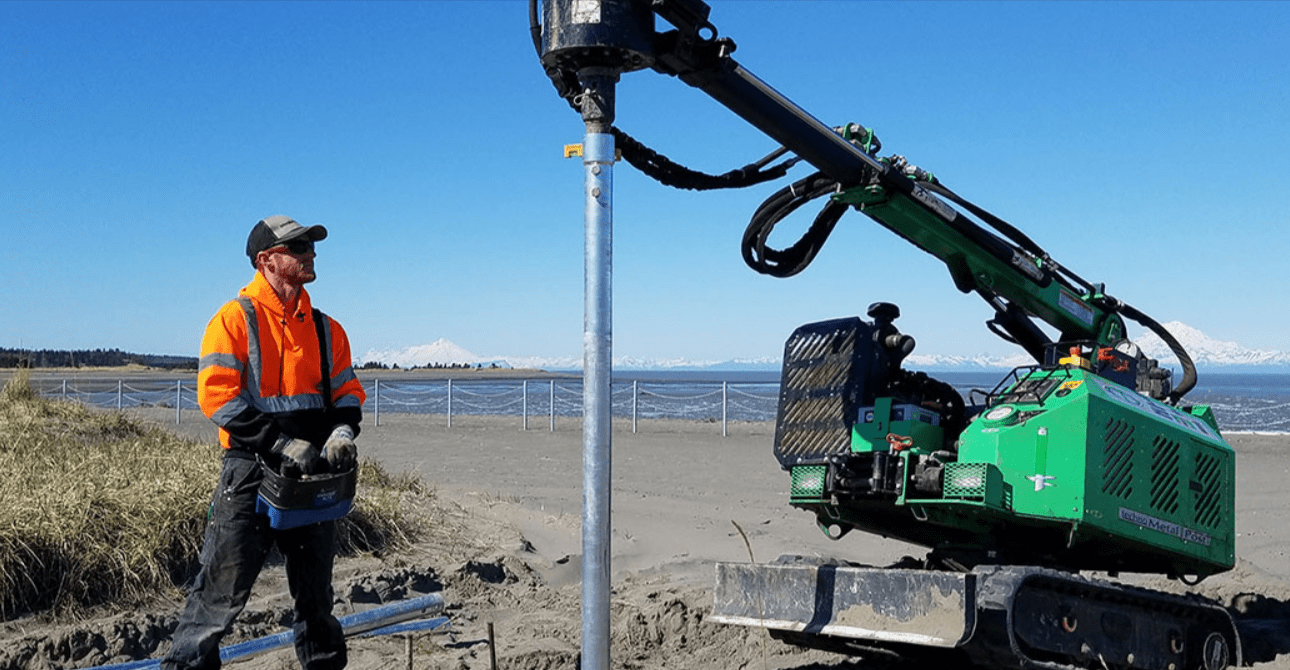Helical piers, also known as screw piles or anchors, are an essential solution for foundation support in both residential and commercial construction. They provide stability for structures built on unstable soils or where traditional foundation methods are impractical. Helical pier installers specialize in the precise placement and installation of these piers, ensuring your structure remains secure and level for years to come.
This guide explores what helical piers are, the benefits of using them, the installation process, and how to choose the right helical pier installer for your project.
Helical piers are steel shafts with helical plates, resembling large screws, that are driven into the ground to support a building’s foundation. They transfer the structure’s weight to stable soil or bedrock, bypassing unstable surface layers.
Applications
- Foundation Repair: Stabilizing sinking or settling foundations.
- New Construction: Providing support for structures in areas with poor soil conditions.
- Decks and Porches: Offering durable and quick-to-install solutions.
- Retaining Walls: Preventing shifting or failure due to soil movement.
Benefits of Helical Piers
Helical piers offer several advantages over traditional foundation systems:
1. Quick Installation
- Requires minimal excavation and can be installed rapidly, reducing project timelines.
2. Minimal Disruption
- Causes less disturbance to the surrounding soil and environment.
3. Versatility
- Suitable for various soil types and can be installed in tight or restricted spaces.
4. Cost-Effectiveness
- Reduces the need for extensive excavation and heavy machinery.
5. Load-Bearing Capacity
- Provides strong, reliable support for both light and heavy structures.
6. Adjustability
- Can be installed at varying depths to reach stable soil or bedrock.
The Helical Pier Installation Process
The installation of helical piers involves several precise steps to ensure stability and effectiveness:
Step 1: Site Assessment
- Soil Analysis: Professionals assess soil conditions to determine the depth and type of helical piers required.
- Load Calculations: Engineers calculate the load-bearing requirements of the structure.
Step 2: Equipment Setup
- Specialized hydraulic machinery is used to drive the helical piers into the ground.
Step 3: Pier Installation
- Piers are screwed into the soil to the required depth, ensuring they reach load-bearing strata.
- Installation torque is monitored to confirm adequate support capacity.
Step 4: Bracket Attachment
- For foundation repairs, brackets are attached to connect the piers to the existing foundation.
Step 5: Load Testing
- Piers are tested to verify they can handle the calculated loads.
Step 6: Final Adjustments
- Installers make final adjustments to ensure the structure is level and stable.
Signs You Might Need Helical Piers
If you notice any of the following issues, it may be time to consult a helical pier installer:
- Cracks in walls or ceilings.
- Doors and windows that stick or won’t close properly.
- Uneven or sinking floors.
- Leaning chimneys or structures.
- Visible gaps between walls and ceilings or floors.
Choosing the Right Helical Pier Installer
Selecting the right professional for your project ensures a successful and long-lasting solution. Here’s what to look for:
1. Experience
- Choose contractors with extensive experience in installing helical piers for similar projects.
2. Certifications and Licensing
- Verify that the installer holds the necessary certifications and licenses.
3. References and Reviews
- Check online reviews and ask for references to gauge their reliability and quality of work.
4. Warranty
- Look for companies that offer warranties on their work and materials.
5. Comprehensive Services
- Opt for contractors who provide site assessments, engineering support, and post-installation testing.
Innovations in Helical Pier Technology
The helical pier industry continues to evolve, offering improved solutions for foundation support:
1. Advanced Materials
- High-strength steel and corrosion-resistant coatings enhance durability and lifespan.
2. Smart Monitoring
- Sensors integrated into piers provide real-time data on load performance and soil conditions.
3. Eco-Friendly Designs
- Piers designed with minimal environmental impact, reducing soil disturbance and waste.
4. Hybrid Foundation Systems
- Combining helical piers with other foundation solutions for maximum stability.
Benefits of Hiring Professional Helical Pier Installers
Hiring experienced helical pier installers ensures your foundation is built to last:
- Precision: Professionals use advanced equipment to achieve accurate placement.
- Efficiency: Experienced crews complete projects quickly without compromising quality.
- Safety: Adherence to safety standards minimizes risks during installation.
- Expert Guidance: Installers provide insights into the best solutions for your specific project needs.
Conclusion
Helical piers are a versatile and reliable solution for stabilizing foundations, repairing structural issues, and ensuring the longevity of buildings in challenging soil conditions. Partnering with experienced helical pier installers guarantees the precision and quality required for a successful project.
Whether you’re addressing foundation problems or building new structures, helical piers offer durability, efficiency, and peace of mind. With the right team of professionals, you can ensure your property remains secure and stable for years to come.


